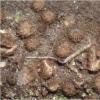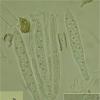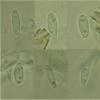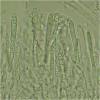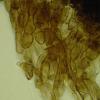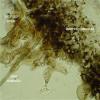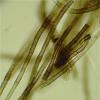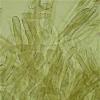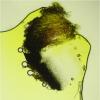
16-09-2010 13:23
 Calzada Augusto
Calzada Augusto
Hola amigos: Este verano pasado he recolectado He

16-09-2010 11:15
 Raúl Tena Lahoz
Raúl Tena Lahoz
Hi again! Yesterday I found this Ciboria on a Que

14-09-2010 09:43
Marja PennanenHello, as I mentioned I found something besides t

13-09-2010 09:07
Marja PennanenHello, these are tiny, 0,1-0,2 mm wide. There

13-09-2010 08:39
 Nicolas VAN VOOREN
Nicolas VAN VOOREN
Bonjour. Une amie m'a transmis une récolte d'un

08-09-2010 21:24
Marja PennanenHello, while looking for the pink Mollisia I natu

08-09-2010 14:19
Jacky LaunoyBonjour à tous, j'ai une question pour les spéc
Pyrenopeziza escharodes
Garcia Susana,
27-03-2013 08:01
I think it could be Pyrenopeziza escharodes, but I have no security. What do you think?
The features are:
Apothecia size 500-700um
Asci biseriate, IKI +. croziers +. Size 50-58 x 5-6.5um
Paraphyses abundant vacuoles. Of 2-3.5um wide.
Spores fusiform, 9-11 x 2.5-3.5um
Reaction to KOH = intense yellow staining.
Excipulum medular angularis
Marginal hairs up to 120 x 6um, pigmented
Presence of a highly developed subiculum, thick-walled hyphae (x 4um)
Thanks in advance
greetings
Susana
Hans-Otto Baral,
27-03-2013 08:36

Re : Pyrenopeziza escharodes
Dear Susana
did you rehydrate your fungus? It will widely open its apothecia (wait for some minutes while keeping them under water).
The refractive vacuoles in the paraphyses and their yellow reaction clearly assign this to Mollisia. The subicular hyphae are also very characteristic of the genus.
What kind of Rubus du you have, blackberries? I think it is Mollisia rosae, and I see that Aebi 1972 lists the species also for Rubus idaeus. That species has simple-septate asci, and I could imagine that in your case there are no croziers but only basal protuberances. If you manage to show more ascus bases we could get more clear.
M. prunicola would have croziers and longer spores, but I am unaware of hosts other than Prunus.
Zotto
did you rehydrate your fungus? It will widely open its apothecia (wait for some minutes while keeping them under water).
The refractive vacuoles in the paraphyses and their yellow reaction clearly assign this to Mollisia. The subicular hyphae are also very characteristic of the genus.
What kind of Rubus du you have, blackberries? I think it is Mollisia rosae, and I see that Aebi 1972 lists the species also for Rubus idaeus. That species has simple-septate asci, and I could imagine that in your case there are no croziers but only basal protuberances. If you manage to show more ascus bases we could get more clear.
M. prunicola would have croziers and longer spores, but I am unaware of hosts other than Prunus.
Zotto
Garcia Susana,
27-03-2013 09:18
Re : Pyrenopeziza escharodes
Hello Zotto
I confused the name of the substrate. It was Rubus, but Rosa canina (very abundant in this area). So perfect with your identification.
Respect to croziers, surely you are right and also one case of protuberances on the base. Cost me find (I guess I wanted to see them).
thank you very much
Susana
?


